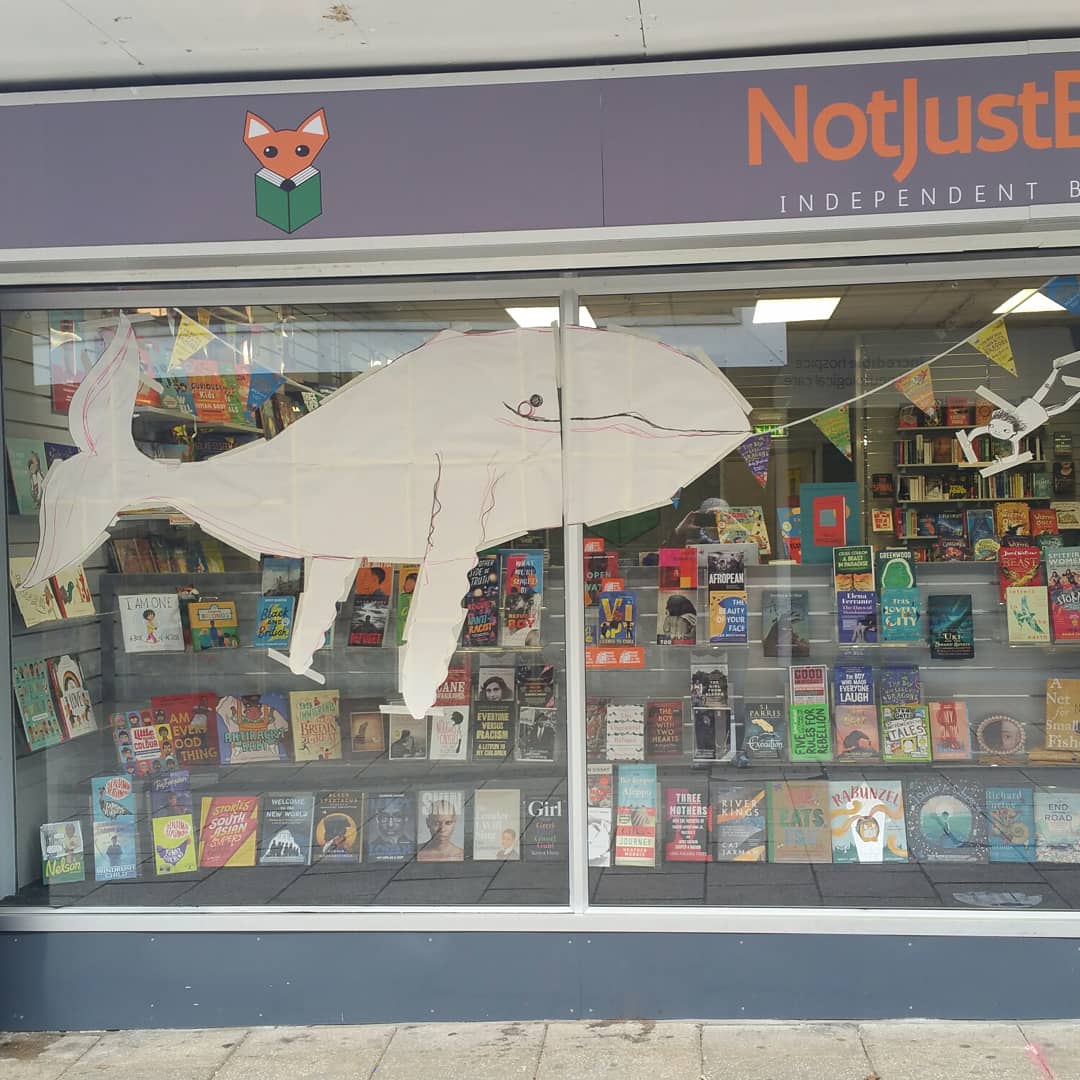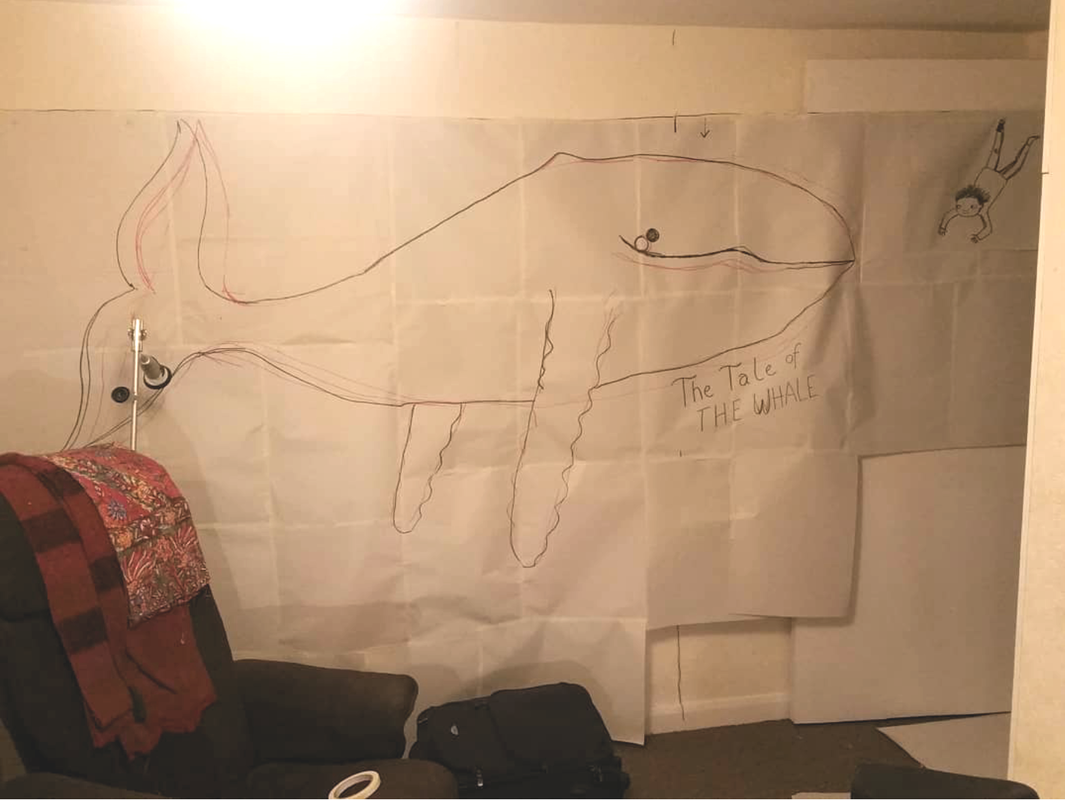|
A week or so ago I was invited to paint a window at "Not Just Books" new independent bookshop in Thetford. See below for videos of the actual painting (time lapse - thanks Millie James!), and result! [When things open up I'd love to go back and have a really good browse, plus take more pics of the inside. And then do a blog article about it because it has the most BEAUTIFUL range of picture books (and other books for children and young people, and has only just opened)]. I was nervous about doing the window as I'd never done one before! A quick search of the internet did not reveal a vast amount of info, save that acrylic paint and posca pens work well on glass (I was also advised by some alumni friends that chalk pens can be great - and easier to clean off a window than acrylic). I did purchase some chalk pens to practice with, but I decided in the end to go with posca and acrylic, as Jane James the shop owner was keen on a window that she could keep up for a while (and chalk paint does rub off with minimal pressure). Also I could not work out how layers could be managed with chalk pens. I was surprised to read on the internet the injunction - I think from an american personage - never to paint on the inside of a window, because of the reflections, "unless you live in a rainy climate!". Say no more, we are in the UK. (Also, I couldn't help wondering whether america was devoid of the particular kind of person who enjoys scratching paint off a surface...) But drawing on the inside of a window, brings up again the knotty issue of layers. Unless you are going to draw lines and then colour around them, which has potential for naffness, there is a need to draw lines and non-block colours first (for me - the eye/faces of both child and whale, whale markings, child's hair etc), and then put the block colours behind these lines in such a way that they are not obliterated. I reckoned that acrylic and posca would work best for this too, although if anyone has any more to add to this in comments I would love to hear it, as there was a bit of bodging and slippage that occurred when I did my window. There was also talk on the internet of messy looking textures and paint strokes revealed by the light shining through acrylic painted on glass. And somewhere else someone mentioned sponges... So I ended up doing my own thing using acrylic paint, stencil, small sponge paint rollers and individual kitchen sponges cut into shapes. It worked well for my particular project as the book isn't very line based and has organic looking colour within shapes. I thought more in terms of shapes. I used a black posca marker for the few lines i need (eye pupils/ mouths). These were the stages: 1) Prep: Found a wall (could be a floor) as big as the window dimensions (I had to do it on a wall that continued into a hall in my smallish cottage!) and mark it out with masking tape. Paper the wall (I used masking tape to stick lots of pieces of paper to each other) with paper that is see-through when held to window. Drew my design on it. Took the paper down, folded it and took it with some ready mixed acrylic paint colours, and some empty containers to mix paint at the site if needed. Sponges, small paint rollers, scissors, plastic containers, dust sheets, cardboard "mixer" strips cut out for mixing paint, rags/kitchen roll, a rubbish bag, paint trays... 2) on site I cut out the whale shape and also the other main sketched item (a child). I stuck the whale and child on the outside of window (needed help from shop owner to hold and tape) and positioned them as I wanted them  3) Drew on inner side of glass the black lines (whales mouth/ child's face) with a posca. Taped over the area that would be whites of eyes from inside. Using masking tape I created a stencil shape around the whale (I later did some turtles this way elsewhere in the window. I started by using the outside piece of the cut out whale for a stencil but in the end masking tape was just as good and easier.) I also used masking tape over the eye area where I wanted to put the whites of the eyes 4) Using acrylic paint I rollered over the stencil, and the black lines (being careful not overwork over the black lines because they did get smudged or moved easily). 5) using sponge brushes purchased from a craft shop, I coloured in the child. And using cut shapes of sponges I created a sea plants and fishes, finally using a sponge paint roller to create texture behind these plants. Note - that american personage was dead right about the reflections! The window looks great, but hard to photograph! Thanks to Jane for the clearer images in video below - which also shows the right side of window with our favourite: the turtles!
1 Comment
A relaxed chat with the Author of "The Tale of the Whale" (with matching whale coffee mugs).3/7/2021
Around the publication date March 2021, it was great to relax and look back: what was the process of making our first book like for us, and what are our hopes for the message the whale wants to spread?
|
AuthorWrite something about yourself. No need to be fancy, just an overview. ArchivesCategories |

 RSS Feed
RSS Feed